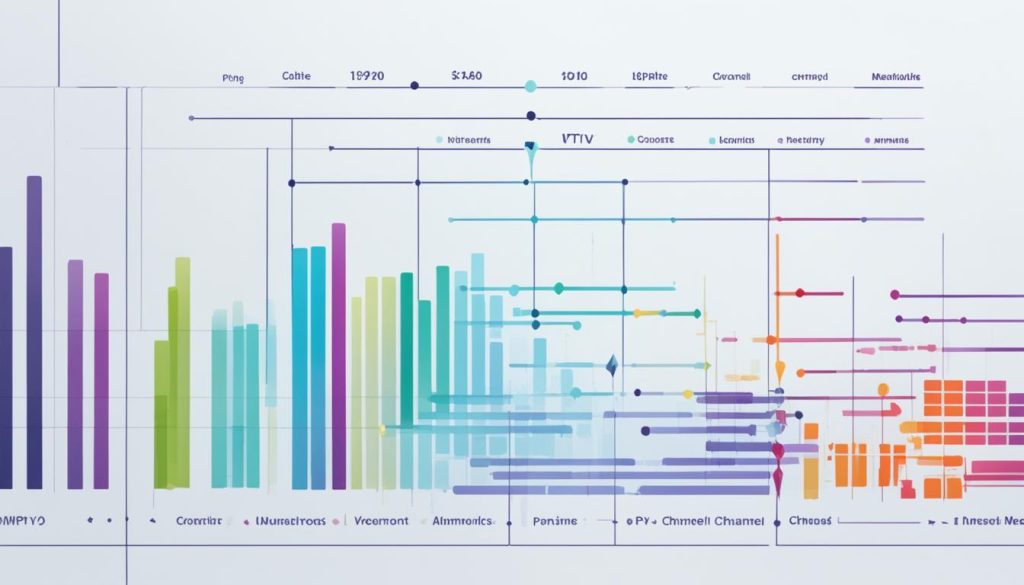IPTV has emerged as a hot topic within the global digital entertainment and telecommunications industries. Broadband and video compression technologies have matured to the point where it is now feasible to offer competitive and compelling IPTV services. The ratio of Latin America and Asia Pacific IPTV subscribers is increasing, with projected growth from 27 million in 2009 to 70 million by 2014. There are numerous stakeholders involved in IPTV services, including service providers, content holders, broadcasters, and end-users. Audience measurement (AM) for IPTV is one of the key technologies for new services that handle user preferences. AM is crucial for stakeholders to determine how segments of the audience are engaging with the content, including demographic and psychographic information, as well as Interests, Activities, and Opinions (IAO) variables.
Key Takeaways
- IPTV subscriber numbers are rising rapidly in Latin America and Asia Pacific.
- Audience measurement is a crucial technology for IPTV service providers to understand viewer engagement and behaviour.
- AM gathers demographic, psychographic, and IAO (Interests, Activities, and Opinions) data to provide valuable insights.
- IPTV stakeholders, including service providers, content holders, and advertisers, can leverage AM data to make informed decisions.
- Privacy protection is a key consideration in deploying AM services for IPTV.
IPTV Audience Measurement and Its Significance
Audience measurement (AM) refers to the process of measuring the size and composition of the audience for IPTV services. This often includes gathering demographic, psychographic, and IAO (Interests, Activities, and Opinions) data to help stakeholders, such as service providers and content holders, understand how segments of the audience are engaging with the content. AM provides invaluable insights that enable IPTV service providers to make informed decisions about consumer product design, business product design, competitive service offerings, operational optimisation, and customer relationship management.
Values of AM for Stakeholders
For content providers, AM helps with content creation and optimisation, windowing optimisation, pricing/licensing, and the development of aggregated data products and insight reports. Market researchers also benefit from AM data for their own aggregated data products and insight reports. Networks and programmers can leverage AM data for content selection and optimising content and promotion placement. Advertisers and agencies can utilise AM data for ad placement, target audience segmentation, return on investment, and creative optimisation. Data processing companies also make use of AM data to create valuable aggregated data products and insight reports.
IPTV Service Providers and AM
IPTV service providers rely on audience measurement (AM) to gain crucial insights that inform their decision-making across various areas of their business. AM enables them to make data-driven choices regarding consumer product design, competitive service offerings, operational optimisation, and customer relationship management. These insights are invaluable for IPTV providers as they strive to deliver compelling and personalised services that meet the evolving needs of their audience.
Content Providers, Market Researchers, and AM
Content providers benefit from audience measurement (AM) data in numerous ways. AM helps them with content creation and optimisation, windowing optimisation, pricing/licensing, and the development of aggregated data products and insight reports. Market researchers also leverage AM data to create their own aggregated data products and insight reports, providing valuable market intelligence.
Advertisers, Agencies, and Data Processing Companies
Advertisers and agencies can harness audience measurement (AM) data to make more informed decisions regarding ad placement, target audience segmentation, return on investment, and creative optimisation. Data processing companies also capitalise on AM data, utilising it to develop valuable aggregated data products and insight reports that offer unique market intelligence.
How do IPTV Providers Measure Viewership?
The audience measurement function for IPTV services can be installed at various strategic points throughout the service delivery infrastructure, such as in terminal devices, home gateways, routers, and content delivery platforms. This enables IPTV providers to gather valuable viewership analytics and IPTV metrics to gain deeper insights into their audience’s TV ratings, audience insights, and viewer engagement.
Audience Measurement Function Locations
The placement of the audience measurement function is crucial for IPTV providers to effectively track viewership and gather comprehensive audience data and viewership reports. By positioning the function in key components of the service delivery chain, providers can capture a holistic view of user interactions and content consumption patterns.
Privacy Models and User Permissions
To ensure the appropriate protection of user privacy, a three-level privacy model is employed when deploying audience measurement services for IPTV. This progressive model collects less privacy information at the lower levels, gradually increasing the data captured as users provide more granular permissions.
Permission Modes During Service Discovery
The permission modes for accessing audience measurement services can be set during the service discovery process in three distinct ways: externally, internally, or through a hybrid model. In the external and hybrid approaches, the IPTV service provider or an independent audience measurement service provider is responsible for obtaining and utilising the necessary user permits. These permission modes help safeguard user privacy when engaging with audience measurement and viewership tracking services.

Conclusion
As IPTV service subscriptions continue to rise globally, various stakeholders have demonstrated a keen interest in IPTV audience measurement (AM) for their new service offerings. The International Telecommunication Union (ITU-T) is currently deliberating on several draft recommendations, with the first versions expected to be finalised soon. These impending standards will usher in a new era of attractive IPTV services that can handle privacy information appropriately, empowering IPTV providers to measure viewership and gain valuable insights into viewer engagement and behaviour.
The ability to track viewership analytics, IPTV metrics, and audience insights will enable IPTV service providers to make informed decisions regarding consumer product design, business product design, competitive service offerings, operational optimisation, and customer relationship management. Similarly, content providers, market researchers, advertisers, agencies, and data processing companies will benefit from the viewership tracking, audience data, and viewership reports to optimise their content, advertising, and market intelligence strategies.
As the industry eagerly awaits the finalisation of these ITU-T standards, the stage is set for IPTV providers to unlock a new era of viewer engagement and TV ratings, ultimately shaping the future of the dynamic digital entertainment landscape.
FAQ
What is Audience Measurement (AM) for IPTV?
Audience measurement (AM) refers to measuring how many people are in an audience of IPTV services. It often includes demographic, psychographic, and IAO (Interests, Activities, and Opinions) information to help stakeholders, such as service providers and content holders, determine how segments of the audience are engaging with the content.
What are the values of AM for different stakeholders?
AM provides valuable insights for IPTV service providers, enabling them to make informed decisions about consumer product design, business product design, competitive service offerings, operational optimisation, and customer relationship management. For content providers, AM helps with content creation and optimisation, windowing optimisation, pricing/licensing, and the development of aggregated data products and insight reports. Market researchers also benefit from AM data for aggregated data products and insight reports. Networks and programmers can use AM data for content selection and optimising content and promotion placement. Advertisers and agencies can leverage AM data for ad placement, target audience segmentation, return on investment, and creative optimisation. Data processing companies also utilise AM data to create aggregated data products and insight reports.
Where can the audience measurement function be installed?
The audience measurement function can be installed at various points, such as in terminal devices, home gateways, routers, and content delivery platforms.
How are privacy and permissions handled for AM services?
A three-level privacy model is used to deploy AM progressively, with lower levels collecting less privacy information. The permission modes for AM services can be set during the service discovery process in three different ways: externally, internally, or in a hybrid model, where the IPTV service provider or an independent AM service provider is responsible for obtaining and using the permits. These permission modes ensure that user privacy is appropriately protected when accessing AM services.



